Review | Dynasty Warriors 9
Dynasty Warriors 9 is, undeniably, the biggest shift the series has seen. It absorbs trends like ‘open-world’, ‘crafting’, and more into it, bizzare as it’s a series which — since it fell into its groove with Dynasty Warriors 2 — traditionally varies very little between each main game.
Every so often we see these big trends appear. Moments like E3 2012’s re-emergence of the humble bow as a poster weapon or the open-world accompanying quote of “See that mountain, you can go there”. Battle Royale and Crafting, are two other major ones. All of these elements ultimately reverberate through the industry — rattling loudly until the next thing drowns them out.
It’s strange then, that Dynasty Warriors’ biggest jump within the history of the long-running series (this year marks 18 years since Dynasty Warriors 2 / Shin Sangokumusou), comes a few entries after many of these trends first showed face.
That said, don’t worry, this is still Dynasty Warriors, and within its wider, open world it features both the opportunity to play the game as a long-winded conquest or as a rapid-dash to the finish. In fact, the additions of things like crafting, open-world, hunting and fishing have simply made it a game which can be played in starker extremes than previous entries.
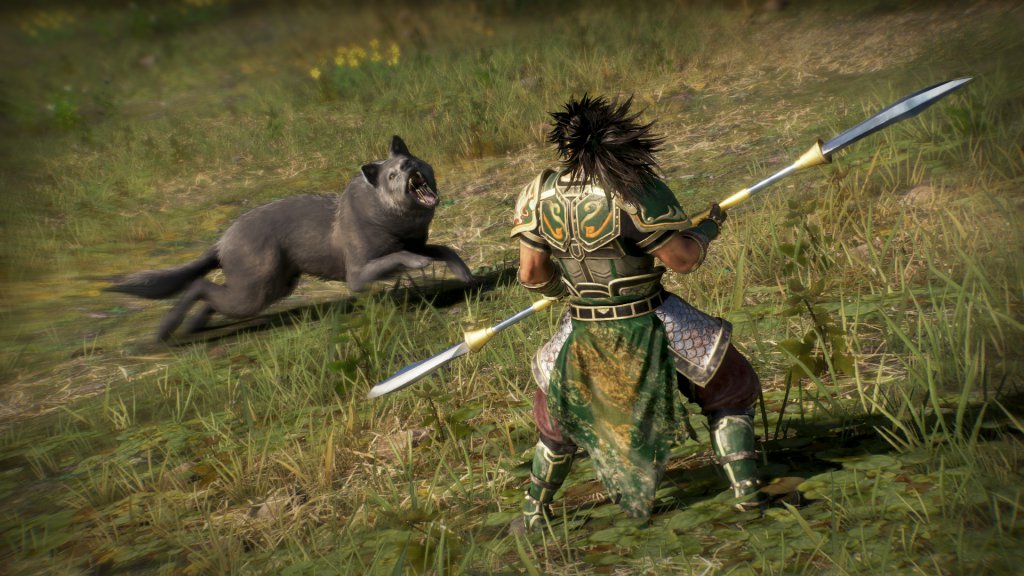
Dynasty Warriors 9‘s 90-strong roster is rapidly betrayed by a simple-looking, faction-based character-selection chart — laying out the characters by faction and chapter of appearance. These are mainly to keep timestamps and eras in check as each of these timestamps contains a variety of events, battles, and missions, all depending on the played character.
For me, initially, the game listed 10 chapters, however on finishing an 8-chapter run as Cao Cao I noticed this had stepped up to 12 on the menu. Not only that, but of the game’s 55 battles I was nowhere near a quarter of the way done — similarly, of the game’s 151 event sequences (short story sequences outside of briefings) I’d unlocked fewer than 10.
Of course, a Dynasty Warriors title having a lot of content is definitely not anything new. So, I should probably discuss the major changes to the game before getting on to campaign persistence, or discussing unlocks.
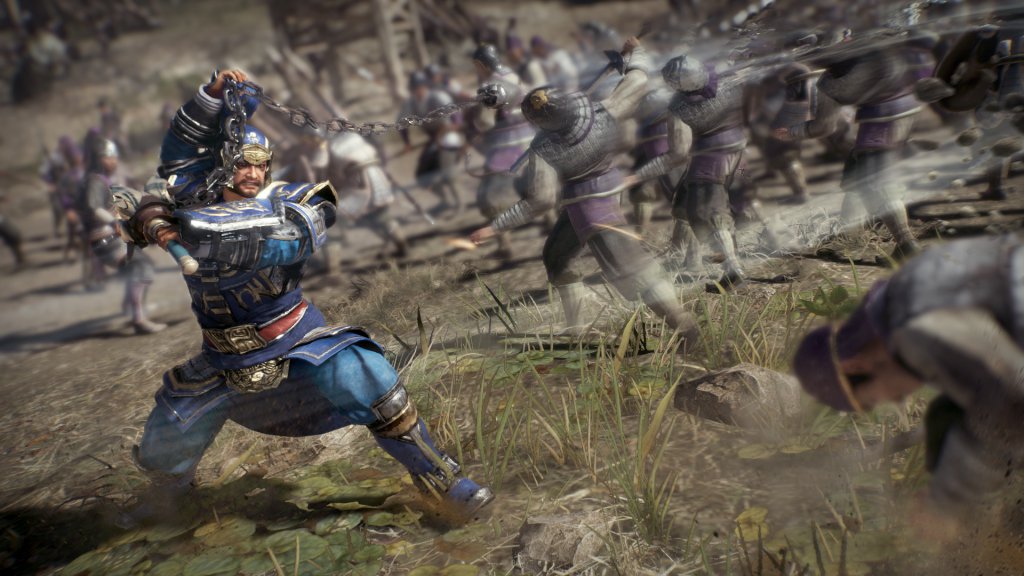
While the game’s open-world (and subsequently, its traversal) is probably going to be the most discussed feature, it is the combat which I want to talk about first. For a start, the traditional attack structure has been slightly refined into a system where weak and strong attacks are divided into the two attack buttons. A trigger button can be held which will open up a special menu, and when this is open the weaker, combo attack will stun enemies while heavy will knock an enemy vertically. The jump button will result in a leaping bound which will send enemies tumbling to the ground. Finally, the musou button will do a character-specific special attack which takes a short while to charge. Musou, as ever, is a devastating string of attacks which stuns, stumbles and juggles most of the enemies it doesn’t kill: that’s not new.
This change up, ultimately, doesn’t actually change the pacing of the combat, mainly due to the fact that the defensive, offensive, and base captain units have received massive toughness boosts to increase the amount of worthy and targetable combatants on the field — beefing out how groups work and move around the map. This is a great fix for those of you who like rushing into a group and smashing down the obvious leader.
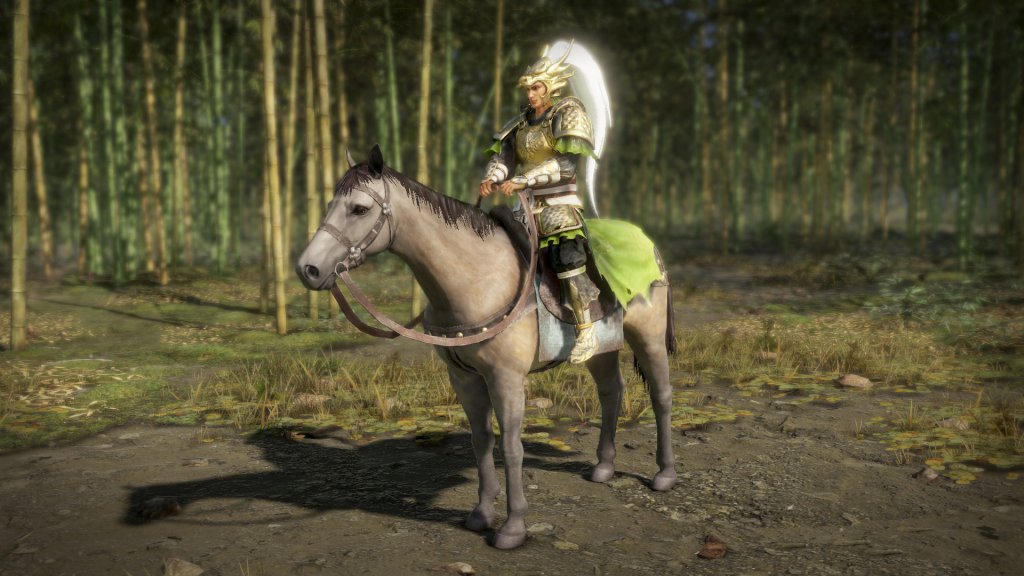
This is all covered to a decent level early on, by an ‘action tutorial’ — one which is endless if the game hasn’t fully installed — in which you’ll be introduced to the tweaks and changes.
Sadly, this does underline the fact that the battle changes are largely cosmetic, and feel as though they are to make way for any character being able to use any type of weapon — as weapons are now fully interchangeable.
While the non-musou attacks are definitely more context-sensitive than their predecessors, you’ll likely still find yourself familiarising yourself with a few combat patterns which will see you through almost any encounter: stun them, juggle them, smash them mid-air, knock them away, repeat until an execution QTE prompt appears. Of course, combat in Dynasty Warriors will never be astronomically different, it simply can’t be without changing up its format of having players be able to finish a chapter with anywhere from a dozen countrymen to the population of a city.
The ability to change characters mid-campaign, and the ability to craft, upgrade and swap weapons through a shared inventory to any character, somewhat undermines the uniqueness of each of the heroes. Certain characters are missing their token weapons, and while there are now just over 390 different weapons (various of the same type, of course) and many of those have pretty cool attacks, it does seem to reduce character selection down to whose bottom you want to look at, story moments you want to experience, and musou attacks you want to use — combat flow can be practically identical with any of the characters after the first playthrough by simply loading in the weapon you used heaviest in your first campaign. Should, of course, you wish.
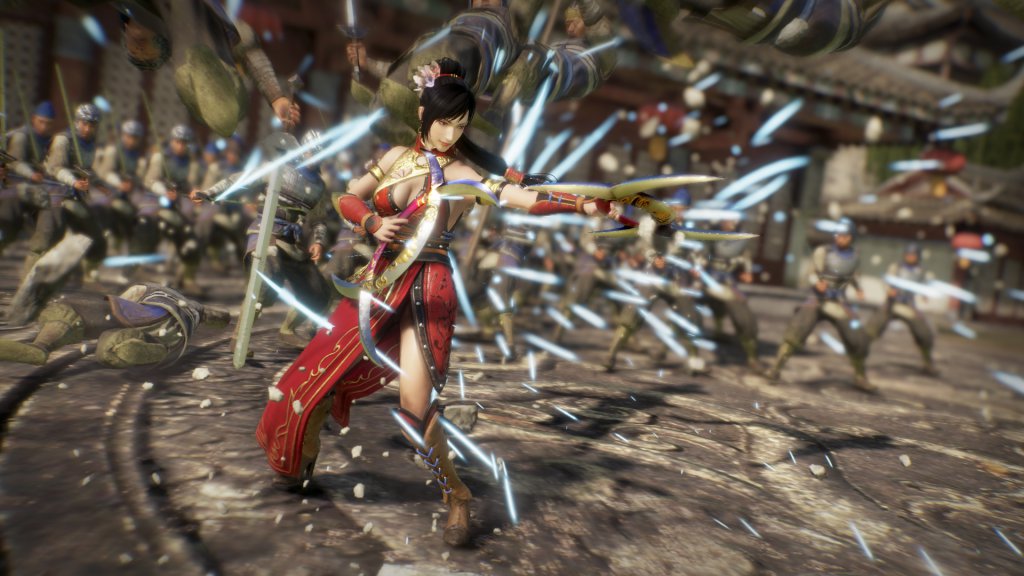
Another part of the crafting system, besides healing items, hunting, fishing and trapping items, comes as gems, which are little modifiers which can be attached to weapons. These can be crafted or simply found, and add a little bit of customisation to weapons; although even though the game features a level-based enemy difficulty system, there’s never really any need to indulge in this unless you want to.
The toughest enemies in the game are deliberately drummed up as high-value targets in the levels they exist within; critical secondary officers who are supposed to give structure and pace to the battle — on a first play these are hard to beat outside of a combination of stunning, juggling, and kiting, however, any future plays it has no real difficulty due to the bonuses from the weapons, gems, and items players will have gained in the first playthrough.
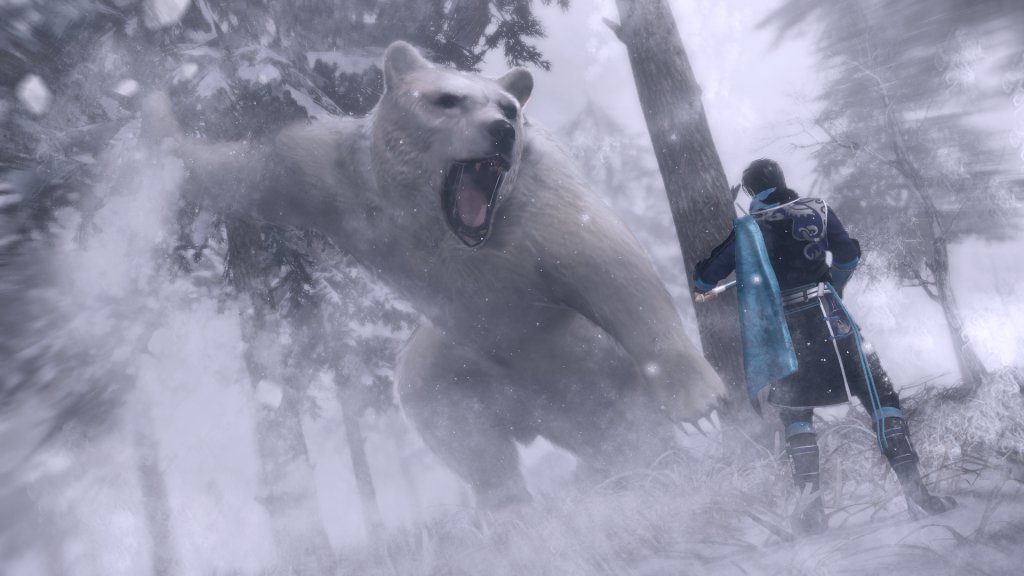
That said, the battles, the events, and the story structure in-general is exceptional. A lot more effort has been made to tell the stories of the settings’ generals, lords and officers, with the likes of Yuan Shu and Yuan Shao playing much larger roles in the narrative than previous titles. While the story moments which border the battles are a little hammy at times, with some characters having asides, or overly stating one-another’s names, it’s a much closer retelling of the setting than previous efforts. Indeed, playing through the missions as each of the Three Kingdoms’ faction leads gave sympathetic backstories to the leaders, one which justified sudden alliance flips and officer shifts in a well-delivered manner.
All of that said, the game still has the same lack of self-awareness the series has always had. Cao Cao’s first time-stamp features Sun Jian approaching him to have a chat, they discuss how Dong Zhou sounds as though he is acting selfishly in not protecting the Wei/Shu/Wu starting village. Yet, as soon as you hit your first combat milestone Xiahou Dun starts yelling out ‘You will be the one to unite these lands!’ — for all of the changes, some of the often quickly forgiven weaknesses still exist. Personally, I am quite fond of this lack of awareness which characters show to one another, and am (not so secretly now) quite glad that there’s so much hamminess mixed in among a vastly improved portrayal of the Romance of the Three Kingdoms.
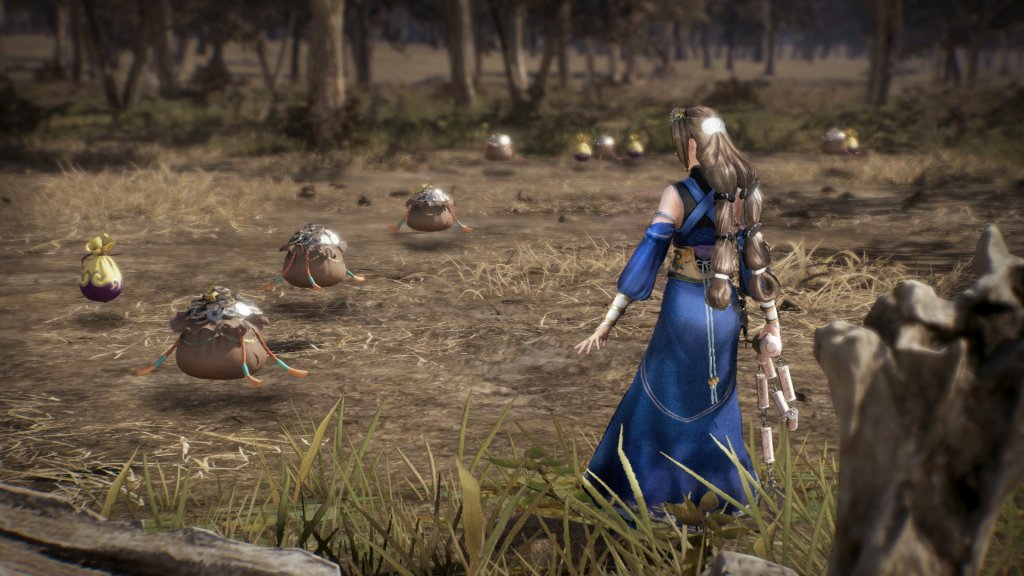
Dynasty Warriors 9‘s biggest shift is definitely in the way that there is only one map in the entire game; every mission and battle has been jigsaw-pieced and glued together onto the singular sprawling map. Its an impressive feat, and the diverse geography is enjoyable and impressively scaled: irrigation runs in fields, villages with more than a dozen homes, river crossings inappropriate places. The main issue is that, much like most open-world games, the world is rather devoid of things to do: until you’ve ran (or auto-ran, more on that in a bit) to most of the areas on the map you can’t fast travel, and a two or three thousand meter sprint can never be aesthetically pleasing when you’d rather not be doing it.
Auto-run, on your horse, does alleviate some of the issues with this; the problem is that the pathfinding is (at current) abysmal. They stick to roads when out in the wild, which can add minutes onto reaching a destination, and when they’re in towns or on the approach to them or checkpoints, its not uncommon for it to run straight into a solid object, unaware of the obstacle. Nipping off to put the kettle on shouldn’t ever have to be something you do to pass time, and yet, when you do it you risk coming back to your equine pal running face-first into fortifications.
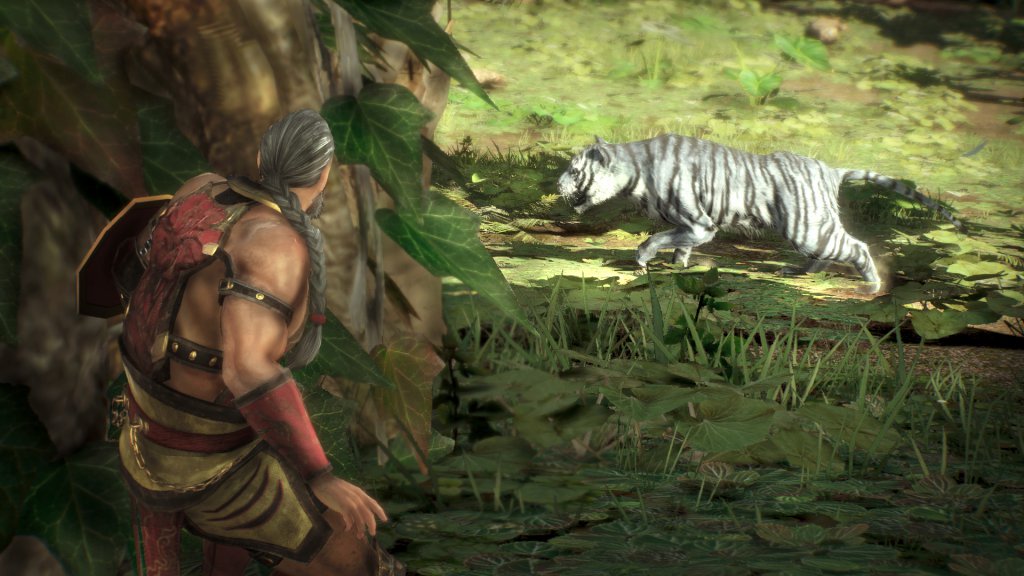
There are almost no other places, that said, where pathfinding is an issue; daytime patrols (you can change the time of day at a tea shop, or bonfire) will follow roads and manoeuvre extremely well. Sadly, though, units simply don’t know what to do while fighting on boats, instead of standing still until engaged in combat. Combat from that point is fine, right up until the AI falls off of the boat, at which point they teleport back onto the raft behind you. It’s jarring and considering the importance of Chibi to the setting, its a bit strange.
Once you’ve visited an area, in any campaign, you can fast travel there. Much like in other open-world games this does rather tend to herald the death of wonder-at-the-world, and in Dynasty Warriors 9 this means you can now just teleport to yards away from the chapter finale, shortcutting any of the side-quests, optional missions, and undermining the open-world efforts of the game.
The fact that the choice to shortcut, and the now non-hero-specific weaponry is in the game is a bit of a problem, it makes consecutive plays profoundly easier — and while there was never much difficulty in carving through the peons, to have officers, pincer-attacks, bottlenecks and more now completely optional leaves the game feeling like a strangeness. Not only this but the inclusion of a grapple-hook which means you don’t even need to beat defenders as to open the way to keeps or inner sanctums.
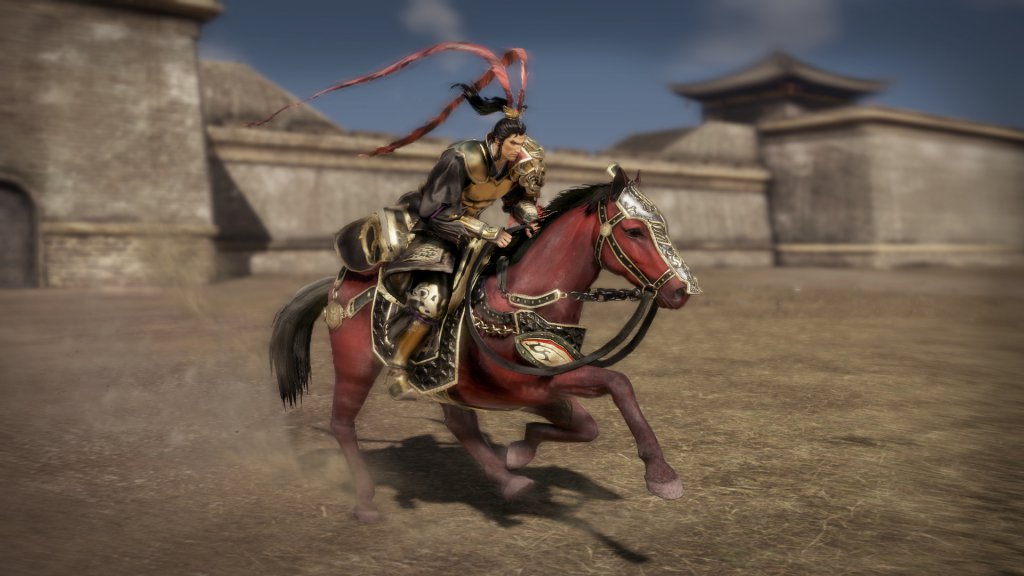
Of course, if you do all of the optional side-missions — tasks which are described as geared to making the final confrontation easier — then you get in far more battles, pushing through all of the gates, and towns, and battlefields of previous games, regularly facing off against other characters in well-placed set-pieces. And, if you wish then you can run favours and small errands for townsfolk and minor soldiers, another way to level up and see the world; beat up these bandits, bring in this deserter, scare off these wolves. If you do play this game
These smaller errands are well distributed around the world; on starting my second campaign (Liu Bei) I fast-travelled off to the most distant city from the objective and started running small errands rather than fighting against Zhang Liang and his militia.
An open world is a strange fit for Dynasty Warriors, and while Dynasty Warriors 9 is undeniably enjoyable when you slip into some of the denser combat areas, at those moments it is classic DW. But, when it comes to travelling long distances for the next objective, the light distribution of activities across the vastly increased map size turns it into a bit of an oddity. I can’t help but feel this is a step in the right direction for the series, and the continued expansion of things to do leaves me recommending it, it just feels as though it was possibly too large a step to take all at once.
Dynasty Warriors 9 is available now on PC (Steam), Xbox One, and PS4.
Comments are closed.